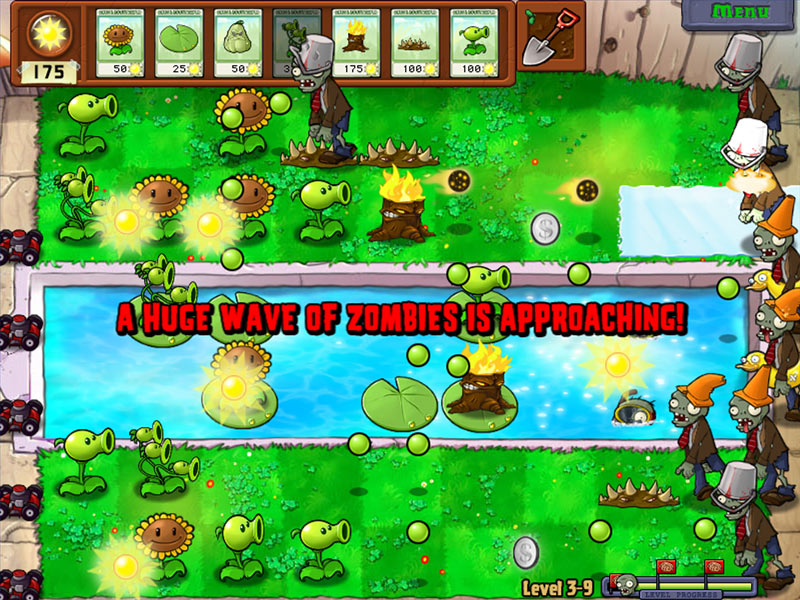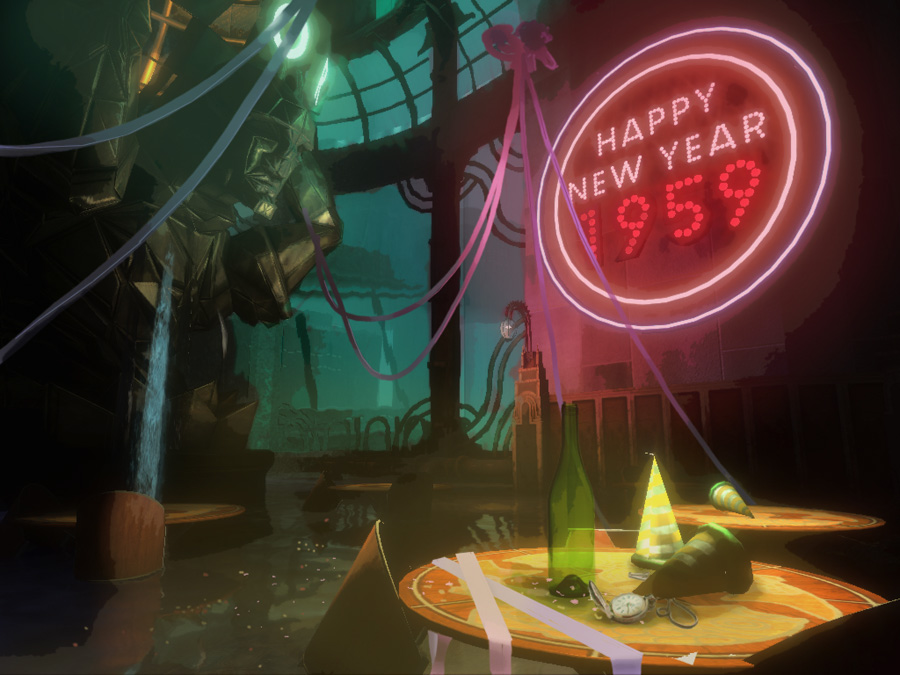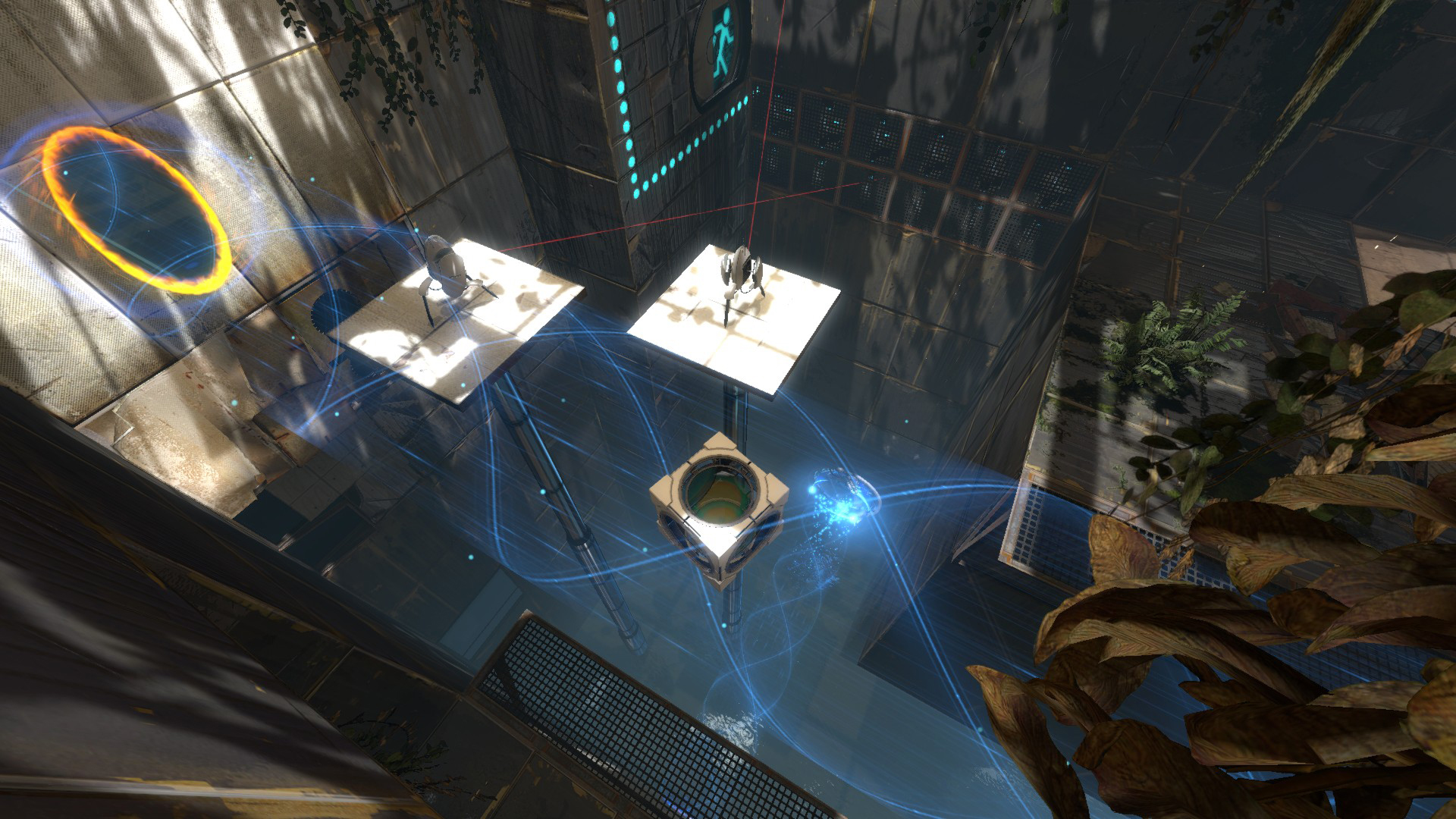Top 25 Games Of This Console Generation: 25-11
With the release of the Xbox One and the Playstation 4 this month the current era of consoles is beginning to come to a close. While there will still be games released for the current generation consoles (Xbox 360 and Playstation 3) for some time yet, the dawn of a new console era seems to be as good a time as any to reflect back on the current one. To that end I’ve decided to rank the games I most enjoyed playing on the current console generation as well as PC games released during the same period. After putting together an initial list I whittled down my options to 25 of the best games I’ve played over the past several years.
I’m going to divide this into two posts in order to make it more readable. The first post will contain the first 15 entries, numbers 11 through 25. I’ll keep my write-ups here a bit shorter. In the case of games that are part of franchises I’ve either entered the entire series as one selection if I thought they were all great or picked one of the titles in the series if I thought it stood head and shoulders above the other(s). The only exception to that rule is EA’s NHL series, which I’ve played dozens, maybe even hundreds of hours of, but which I didn’t think fit on this list. Without further ado, let’s jump in at #25. (OK, slight ado: I’m not including any games released in 2013 here because I haven’t had enough time to reflect on them.)
25. Deus Ex: Human Revolution

Oh Human Revolution, like so many games you broached interesting and thought-provoking themes and then turned out to not have much to say about them. That aside, the game simply oozed style, presenting a vision of the future that was often dark but couldn’t really be called a dystopia, which is pretty rare in gaming. I thoroughly enjoyed the open world and the option to approach most of the game’s objectives from a number of divergent approaches. Except for the boss fights, which were uniformly awful and didn’t make any sense within the game’s fiction or systems. I played through the game stealthily, because why would you pass up the opportunity to play a game methodically when so many others give you nothing to do but shoot at faces?
24. Shogun 2: Total War

I could have chosen from any number of Total War games here, I suppose. Medieval 2 had a lot going for it, but god were those castle sieges unbearable, especially once your opponents started building the large, multi-level castles. Shogun 2 might actually be a bit less interesting on the battlefield, but it improved upon so many little things. I enjoyed the fact that, due to the setting, castle sieges were significantly reduced in importance and frequency. The upgrade trees for both generals and your clan as a whole was really cool. And this is easily the most stylish of the Total War games to date. Oh yeah, and it’s still about gathering armies of hundreds or even thousands of soldiers for thoroughly impressive battles that manage to straddle a careful line between being busy and yet still clear enough to make sense.
23. Spore

Spore was a huge disappointment to a lot of people when it was first released. The reason for that is simple: people are imbeciles. Spore was full of the kind of charm that most games could only dream of having. Its technology was also ground-breaking, with algorithmic animations and textures that could mold themselves to whatever creatures users managed to create. And it was the first of the “massively single-player” games, filling your single-player worlds with the creatures, buildings, spaceships, and planets that other users had created. It was a social experience you could have by yourself. And the sense of scale was truly marvelous: there’s something incredibly satisfying about getting to the space stage and flying around your home world realising that not that long ago you were in control of just one tiny creature waddling about the planet.
22. Plants vs Zombies

Plants vs Zombies has one major flaw: you can become too good at it. That’s the problem with the line that Popcap had to straddle in developing a game that sought to bring some of the complexity of core games to a more casual audience. To a great degree they succeeded. This is another game that I enjoy largely because of how charming it is. The underlying gameplay is also quite fun, especially on your first pass through the levels as you learn what each of the plants does and how to use them most effectively. Plants vs Zombies took a fairly boring and often rigid genre – the tower defence game – and turned it into a streamlined, funny, and often inventive game that demanded just enough attention to be fun without ever getting frustrating.
21. Bioshock

Bioshock was the first first-person shooter that I ever played all the way through. I’ve never really found manshooters all that interesting, focussed as they usually are on bizarrely gruff men with fast reflexes and little time for strategy or contemplation, but Bioshock managed to be more than that. It is one of the most visually stunning games I’ve ever played; the opening 15-20 minutes where you simply enter Rapture and marvel at its art deco design is one of the highlights of all my time spent playing video games. The interactions between magic and shooting and melee combat along with the ability to customise character “builds” lent Bioshock considerably more depth than pretty much any other shooter on the market. And the battles with the Big Daddies were an inspired bit of game design that made Bioshock unique and created some great opportunities to use the plasmids in varying ways. [If you’re wondering why I’m only listing the original Bioshock and not Infinite, I’ve written at length about that game’s flaws previously.]
20. Castlevania: Lords of Shadow

Lords of Shadow was not an especially original game: its combat was in the style of God of War, its platforming in the style of Uncharted, and some of its boss fights in the style of Shadow of the Colossus, and it’s story is a nonsensical mish-mash of various mythologies. But oh, is it ever a joy to play. The combat is perfectly tuned, requiring the player to master the constantly growing arsenal of abilities at their disposal and making great use of its dual light/dark magic techniques; turn on light magic and your attacks heal you, turn on dark magic and your attacks are powered up. This is another game with some simply fantastic art design. Unlike virtually all contemporary games it uses a fixed camera position, and it uses it to great effect to frame scenes in ways that show off the fantastic architecture and the wonderful outdoor areas. This is a game that was overlooked by a lot of people but if you’re into action games and like a good challenge you would be hard pressed to find many more enjoyable games in the past few years.
19. Uncharted 2 & 3

If you had any inclination to play the Uncharted games you’ve surely done so by now, and so you know how good they are. While the art design isn’t on the level of a game like Bioshock, the Uncharted games certainly had some of the prettiest graphics of this past console generation. They also told great classic adventure stories and created techniques of merging cut-scenes and gameplay that other story-oriented games could learn a lot from. The mix of platforming and gunplay is excellently tuned, especially in Uncharted 3, which I thought had noticeably improved level design relative to the combat areas in Uncharted 2. And the showpieces are, as advertised, thrilling.
18. Portal 1 & 2

These are also games you’ve almost certainly played if you have any interest in them, so instead of describing them let me tell you something I’ve thought about game design: one of the main things that makes video games fun is movement. One of the reasons a game unexpectedly may become successful is that it invents a fun new way of moving around levels. The Tony Hawk’s Pro Skater games are a great example of this. And Portal is another. The idea of joining two spaces together such that the player could traverse levels simply by placing and walking through portals was brilliant. And on top of that they built a great series of puzzles. Easy to recommend to pretty much anyone.
17. Rock Band

You remember Rock Band parties, right? Of course you do. You definitely went to some, maybe you even held one yourself. I remember one of the first Rock Band parties I went to: a number of people had gone outside for a cigarette break. Those of us inside kept playing. I took vocals on a Black Sabbath song. We reached the song’s bridge, where the game gives the vocalist points for making more or less any noise. I decided, without really thinking about it, to do a high-pitched 1980s heavy metal “YEAAAAAAAAAAAAH!!!” as high in my vocal register as I could. Apparently the people outside could hear me and were amazed at my vocal range and they rushed back inside to tell me. Everyone, including me, was doubled over in laughter at the absurdity of it. That’s the kind of thing that happenned at Rock Band parties. I hope we get another game that creates those kinds of stories before too long.
16. Eternal Sonata

If I had to pick only one video game genre to play until the end of time it would be Japanese Role Playing Games (who are these people who present us with such bizarre ultimatums?). Eternal Sonata was a very good one with a very unusual premise: you play as Frederic Chopin in his dying dreams, in a world where cities, characters, and more are named after terms from classical music theory. The story is moving and the characters are charming in a way that only JRPG characters can be. The combat was fast-paced and the combo-based light/dark mechanic was fun, though there was often too little strategy in the way fights played out. And the game just looks fantastic; Eternal Sonata is right up there with the Bioshock games as far as best art design this generation. It’s the best use of cel-shading that I’ve seen.
15. Batman: Arkham City

Arkham Asylum was a fun game, but once you sit down with Arkham City it feels like the earlier game was just a warm-up. Arkham City takes the excellent combat from Arkham Asylum and wraps it in an open world with a vastly improved story and a lot more fun things to do. Traversing Arkham City as Batman, especially once you get the grapnel gun, is a ton of fun. The combat is every bit as good as it was in Arkham Asylum, maybe even better. And the predator rooms are still a thrilling experience, a more cerebral way of feeling like Batman. The ending is strange and abrupt, but every moment of the journey there is finely tuned and great to play. This is one of the games showing that there’s a lot more you can do with an open-world experience than just stealing cars.
14. Warhammer 40K: Dawn of War 2

The original Dawn of War was an excellent real-time strategy game in the vein of Starcraft. Dawn of War 2 maintains the appearance of an RTS, but its single-player mode is actually more like Diablo with a squad. You play as 4 small squads, each of which levels up abilities and finds new equipment as you go and each of which fills a specific niche in combat. There is no base or unit building of any sort. Instead you run around each map clearing it of enemies before (usually) fighting a boss. Like I said, sounds more like Diablo than Starcraft. The over-arching story is standard space marine nonsense, but the gaming structure placed on top of it, which requires you to prioritise planets to save, artifacts to gather, etc. is excellent and really enhances the overall experience.
13. Red Dead Redemption

Red Dead Redemption gave me such high hopes for Grand Theft Auto 5 (which it failed to live up to). Here was Rock Star taking the open-world structure they’d pioneered and really doing something interesting with it. Unlike the GTA games, the story in Red Dead Redemption is a huge part of the draw and it more than lives up to that expectation. The general mission design is also improved from the Grand Theft Auto games. And let’s be honest: Ocarina of Time proved how awesome it is to just ride around on a horse, and that hasn’t become any less true since then.
12. Left 4 Dead

Left 4 Dead was the first multiplayer shooter I played since Goldeneye (and still the only one I’ve really spent any time with). The cleverest part of the design was the way that it’s not just beneficial, but necessary for all four team-mates to work together; the zombies are designed to take advantage of players who become separated, and players will quickly lose if they don’t work as a team. The AI director, which modifies the pace of zombie attacks, item placements, and the like in order to create a unique experience every time was a great touch (and one that I still wish other games would learn from). It remains probably the best multiplayer game available, and if you have Steam and a copy of L4D we should play it together some time.
11. Gran Turismo 5

I’m not a big racing game guy generally (I only own one other racing game from this console generation[Mod Nation Racers]), but there is something really compelling about Gran Turismo, which puts you in real cars and lets you race them around a combination of some of the world’s most well-known tracks and the excellent Gran Turismo originals. The experience of starting from a simple used car like a Honda Civic and then building up your bank account to buy better and better cars remains really fun and unique. And at the end of the day, Gran Turismo still has the same thing going for it that it’s always had: the best car handling physics model in the world.
* * *
So that’s the first 15 games on the list. I’ll be back with the top 10 later in the week.

